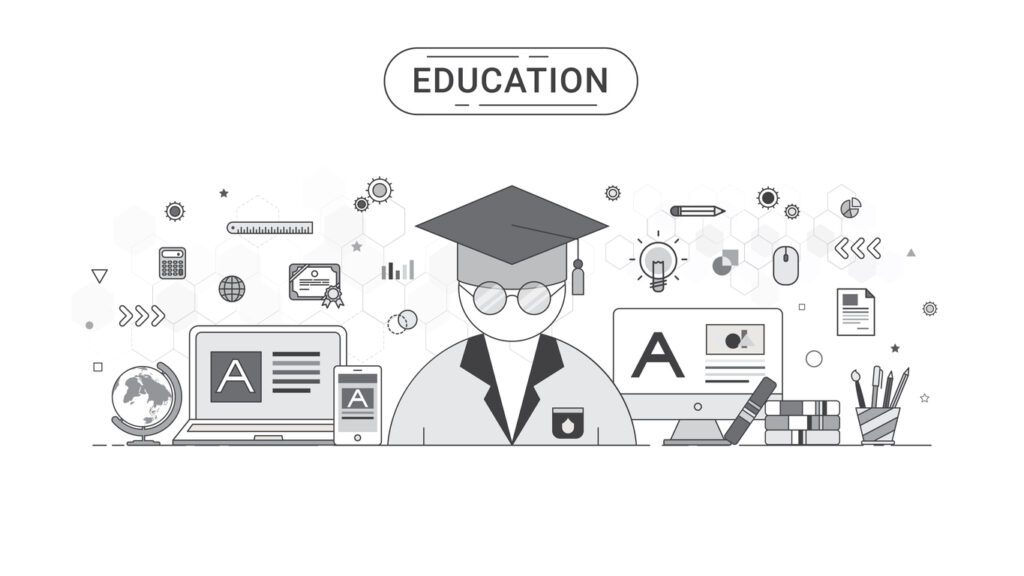Ohio's 2023 Biennial Budget Updates
As promised in our first biennial budget blog back in March, we have been keeping an eye on the biennial budget and what it means for our partners, clients, and communities. Taking a look back at the first glimpse of the budget, there have been a few noticeable changes that we will dive into in this article.
As mentioned previously, while EEP leaves analysis of the state funding system to experts like BASA or OSBA, we do our best to give a high level overview of what is to expect for educational funding.
You’ll notice a few areas of focus that continue to stay in the budget. Those include; career awareness, work-based learning, innovative workforce programs, and industry recognized credentials. Ohio is investing a lot of money in different pathways and programs that will prepare today’s youth for successful futures.
A great place to begin or deepen your thinking about and building pathways is the LaunchPad 2023 – Pathways to Possibilities learning event happening this summer. We’ll help you bring your middle and high school pathways to life so you can help your students earn credentials, gain on-the-job experience, and successfully graduate with a bright pathway ahead of them, but more on that later!
Here are a few of the key funding areas that are still listed in the budget:
- Career Awareness and Exploration funds (CAE). By FY25, funding to Career Tech Planning Districts on behalf of their home schools will go from $5 to $10 per student.
- Work-based Learning Incentive Program. $10 million each fiscal year to pay school districts, community schools, and STEM schools $1,000 for each student that completes at least 250 hours of work-based learning. Estimates it will fund up to 10,000 students per year!
- Business Advisory Council incentive funds. Payments of up to $50,000 in each fiscal year to each business advisory council designated as “high quality” by receiving a rating of three or four stars under ODE’s business advisory council recognition. BACs will be required to use payments to support business advisory council duties under continuing law, increase career awareness and exploration activities for students, and expand access to work-based learning opportunities.
- Industry Recognized Credential Reimbursement . During the last 2 fiscal years, ODE only paid out about ½ of the $8 million available. This budget the state is allocating $5.5 million per year to better align with what has been used in the past.
- Innovative Workforce Incentive Program continuation. ODE pays each school district, community school, STEM school, and JVSD $1,250 for each qualifying credential earned by a student during the prior fiscal year. The recommended funding of $10.5 million per year will support full payment for up to 8,400 qualifying credentials annually. This recommendation is slightly lower than FY23 since the Department only paid out about $4.5 million in FY22.
- Career Technical Education Equipment Grants. This was changed slightly. Previously this was to assist traditional districts, JVSDs, community schools, and STEM schools, but is now for Career Centers ONLY with equipment purchases necessary to establish or expand career-technical education (CTE) programs. Priority will be given to CTE programs that support careers on Ohio’s Top Jobs List and establish or expand credentialing programs that qualify for the existing Innovative Workforce Incentive Program (IWIP). Start-up costs for advanced manufacturing, welding, robotics, and other in-demand programs may cost as much as $500,000. This would fund at least 100 new programs each year!
- Note: Ohio Facilities Construction Commission budget also has $200 million in FY2024 to support construction projects that establish or expand CTE programs.
This is a HUGE reason why we continue to pour so much time and so many resources into our LaunchPad event. Middle school and high school teams will learn how to set up a successful pathway that is fit for their students and communities while also learning about the funding available to them. This is a fully immersive experience that brings together experts, pathway partners, industry professionals, and education leaders from all over the U.S. Our team thoughtfully picks presenters and vendors that we know will be the perfect fit for our schools.
Continuing the list of areas that are still listed in the budget:
- Student Wellness and Success funds (SWSF) are still embedded within the ‘disadvantaged pupil impact aid (DPIA) but the bill adds a new requirement. Districts and schools must spend at least 50% of SWSF for either physical or mental health based initiatives, or a combination of both. Districts must also develop a plan for using SWSF in coordination BOTH: community mental health provider or local ADAMH board and community partner. Plans must be shared at public meeting and posted on the district website. SWSF funds from FY2020 – FY23 must be expended before June 30, 2025 or repaid to ODE.
- College Credit Plus teacher credential grants. $7.5 million per fiscal year to support graduate coursework for high school teachers to receive credentialing to teach CCP courses in a high school setting. Priority will be given to education consortia of a public or private institution of higher education in Ohio and high schools identified as economically disadvantaged that have no or limited numbers of teachers credentialed to teach CCP courses. This will likely be a competitive grant, if you need grant writing support, you know where to find it. 🙂
- School Safety Training Grants The Attorney General’s Office will continue to make grants for school safety, school climate and training available to public and chartered nonpublic schools, educational service centers, local law enforcement agencies, and schools operated by county boards of developmental disabilities.
- Teacher Apprenticeship Program. ODE will be required to create a Teacher Apprenticeship Program in up to 5 areas of teacher licensure.
Here are some of the items that have been added to the house version of the budget and were not previously listed in our last blog:
- Junior Achievement Financial Literacy & Workforce Readiness Program Initiative. Three Junior Achievement regions (North Central Ohio, Greater Cleveland, Mahoning Valley) will share $1.5 million to expand awareness and participation in financial literacy, workforce/ career readiness and entrepreneurship programs and resources across Ohio.
- Our friends from Junior Achievement will be presenting and will be available for private meetings at LaunchPad 2023! Learn more about their initiative and all of the great and FREE resources they offer!
- Reimbursement for Low Income Student AP and College Exams Fee. Students whose household income is at or below state median income would be able to be reimbursed for test costs.
- Grow Your Own Teacher Program – Up to $7500 for low income HS seniors and certain employees to earn scholarships of up to $7,500 for up to 4-years who commit to teaching in a qualifying school for at least 4 years after graduating from a teacher training program. $5M in FY2024 and $10M in FY2025.
- Teacher Loan Repayment Program – Eligible teachers can apply for an award of up to $40,000 in loan repayment funds after teaching for 5 consecutive years in a high need subject area at a public school that has persistently low performance rating on state report card and has difficulty attracting and retaining teachers. $25 million to fund at least 625 teachers.
- Jobs for Ohio Graduates – brings back funding for JOG program at $2 million per fiscal year.
And lastly, there were also some things that were originally on the proposed budget that are no longer listed. However, these can always be added back into the senate version!
- NEW Graduation Requirement: with some exceptions each student must provide evidence of having completed a Free Application for Federal Student Aid (FAFSA).
- School Resource Officer Funding. School districts, site-based community schools, STEM schools, and chartered nonpublic schools will be eligible for funds using a base amount of about $94,500 per building. Local Education Agencies (LEAs) will be required to apply for the funds but as long as they apply, the funds will be guaranteed.
If you are interested in digging deeper into details, you can check out the Legislative Service Commission’s website.











